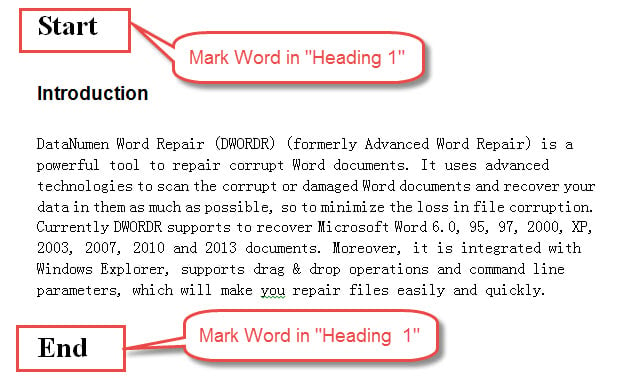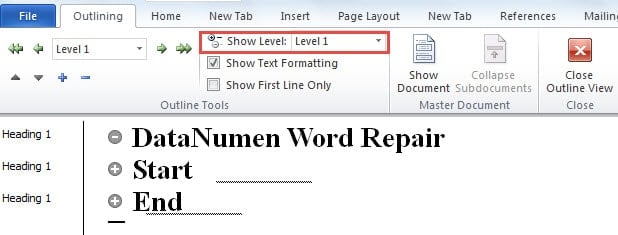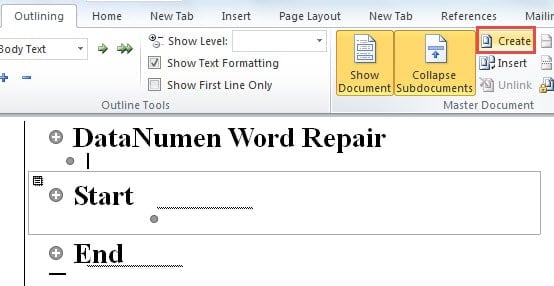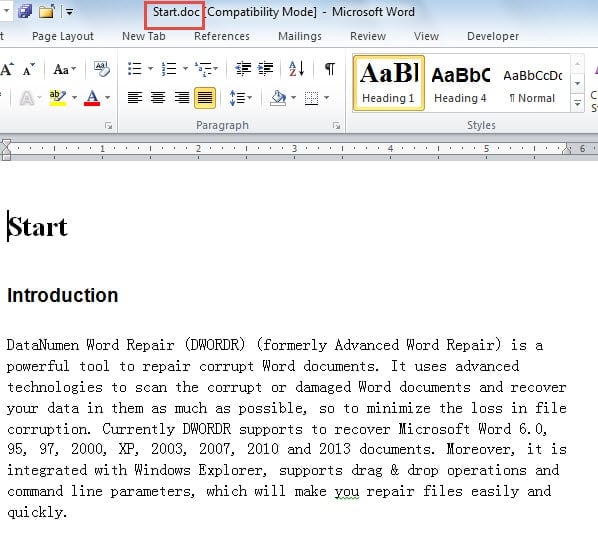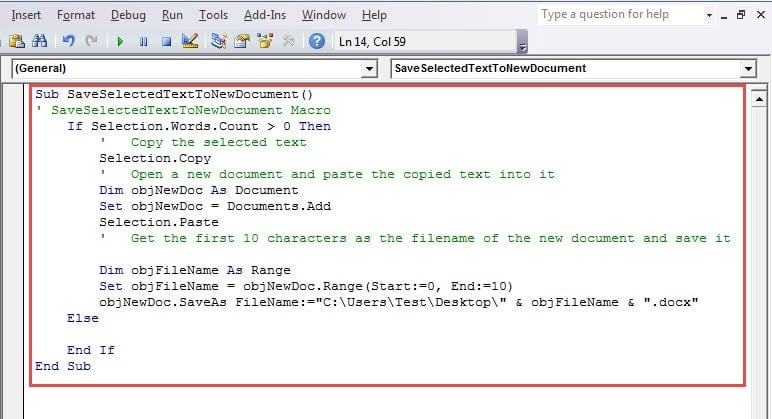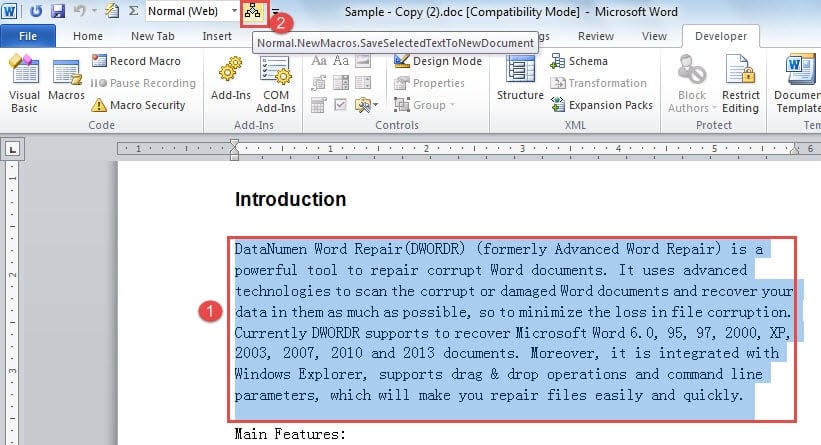In this article, we focus on providing you with 2 quick ways to split a Word document into multiple ones.
There are times we will have a rather long document, requiring a team work. Then it’s pretty necessary to split it into several shorter ones to speed up workflow. Instead of doing it in old-school way, like cutting and pasting, we have more fast methods to this tedious task. Just read on to see more.
Method 1: Operate in “Outline View”
- First and foremost, take necessary backup for your files in case any misconduct may be done to it during the process.
- Secondly, see if the part of text to be split has been placed under level heading, such as Heading 2, 3, 4, etc. If it is, you can move directly to the third step. However, if not yet, you should enter some mark words both at the start and end of the text, and set these words in “Heading 1”. If we put these words in, say, “Heading 3”, then when the text contains a higher level heading style like “Heading 2”, you won’t be able to get the text out. Here is our example:
- Thirdly, click “View” tab.
- Then click “Outline” in “Document Views”.
- Now under “Outlining” tab, go to “Outline Tools” group, and choose the level of your mark words on the drop-list of “Show level”. Here, we shall choose “Level 1” for we just set them in “Heading 1”. And all texts in level 1 will be displayed.
- Next, click “Show Document” in “Master Document” group. And you will notice both “Create” and “Insert” option are now available.
- Then click the plus sign ahead of the first mark word so as to select this part of text.
- Lastly, click “Create” to start splitting the document.
- You can repeat step 7 and 8 to finish separating the rest of the document. And remember to save the file when you are done. Then go to the location of the original file, and you will find all the new documents. Below is what you may achieve:
Method 2: Use VBA Codes
If you prefer the copy and paste method, you probably can let Word macro do the job for you. And better, you can add the macro to “Quick Access Toolbar”, so you can easily use it repeatedly. For the steps to do that, please refer to our previous article: How to Quickly Invoke another Application from MS Word
- To begin with, press “Alt+ F8” to open the VBA editor.
- On the right editing area, paste the following codes:
Sub SaveSelectedTextToNewDocument()
If Selection.Words.Count > 0 Then
'Copy the selected text
Selection.Copy
'Open a new document and paste the copied text into it
Dim objNewDoc As Document
Set objNewDoc = Documents.Add
Selection.Paste
'Get the first 10 characters as the filename of the new document and save them
Dim objFileName As Range
Set objFileName = objNewDoc.Range(Start:=0, End:=10)
objNewDoc.SaveAs FileName:="C:\Users\Test\Desktop\" & objFileName & ".docx"
Else
End If
End Sub
- Then save the codes and add macro to “Quick Access Toolbar”.
- Next, select a text and click the macro button. You will get a new document.
Notes:
- Among the codes, the “C:\Users\Test\Desktop\” refers to the path where the new documents will be stored. You can change it as you like.
- The codes “Set objFileName = objNewDoc.Range(Start:=0, End:=10)” means we will have the first 10 characters of the selected text as the name of new file. Likely, you can also change this part accordingly.
By the way, you may also need to merge or combine these revised documents into one. Then you can take ways offered in the following 2 articles:
How to Combine & Merge Multiple Word Documents into One
How to Create a Master Document that Links to Multiple Subdocuments in Your Word
Inevitable Disaster
Living in a hyper-connected world, everything is concerned with data nowadays. As we daily use Word to deal with a large amount of information, everyone should bear the file damage in mind, for no one can tell when the next data disaster will happen. As inevitable as it is, we must prepare ourselves by getting an efficient tool to repair corrupt Word data beforehand.
Author Introduction:
Vera Chen is a data recovery expert in DataNumen, Inc., which is the world leader in data recovery technologies, including Excel data problem repair tool and pdf repair software products. For more information visit www.datanumen.com
